Utrecht City 作者: 来源: 发布时间:2021-04-29
一、所属省或是州,具体位置,人口,面积
Population Size: 340.000
Surface Area (sq.km): 99.2
Population Density (people/sq.km): 3,604
Utrecht is the capital of the province of Utrecht. It has 343,038 inhabitants.
It is located in the eastern corner of the Randstad conurbation and is the fourth largest city in the Netherlands with a population of 345,080 in 2017. It is one of the handful cities in the country founded by the Romans, but it is also the seat of the Archbishopric of Utrecht (founded over 1300 years ago), the highest Catholic authority in the Netherlands. The city was accordingly endowed with the tallest cathedral in the country.
According to our city rankings, this is a good place to live with high ratings in travel connectivity, safety and healthcare. Utrecht becomes one of the world’s best places to live.
Utrecht, gemeente (municipality), central Netherlands. It lies along the Kromme Rijn (Winding, or Crooked, Rhine), Oude (Old) Rijn, and Vecht rivers and the Amsterdam–Rijn Canal. Its original Roman name, Trajectum ad Rhenum (Ford on the Rhine), later became Ultrajectum, and then Utrecht.

二、自然地理(地理环境、自然资源,交通情况)
Utrecht Geographical coordinates
Latitude: 52.0913, Longitude: 5.12275
52° 5′ 29″ North, 5° 7′ 22″ East
Utrecht Area: 9,929 hectares
99.29 km² (38.34 sq mi)
Utrecht Altitude: 10 m (33 ft)
Utrecht Climate: Oceanic climate (Köppen climate classification: Cfb)
Utrecht Time zone
UTC +1:00 (Europe/Amsterdam)
Summer time UTC +2:00
Winter time UTC +1:00
Climate
Utrecht experiences a temperate oceanic climate (Köppen: Cfb) similar to all of the Netherlands.
Public Transport
The Dutch public transport system is one of the best in the world. However, it may seem a bit complicated for foreign visitors. Utrecht Region Pass takes all the hassle away so that you can jump from train to tram to bus and on a bike, just like the locals do. From the moment you arrive until the moment you depart. From the airport to your hotel. From your hotel to the conference center. From the meeting room to castles and more.
Situated directly between the A2 and A12 highways and can also be reached easily by public transport.
Heavy and light rail
Utrecht Centraal is the main railway station of Utrecht and is the largest in the country. There are regular intercity services to all major Dutch cities; direct services to Schiphol Airport. Utrecht Centraal is a station on the night service, providing 7 days a week an all-night service to (among others) Schiphol Airport, Amsterdam and Rotterdam. International InterCityExpress (ICE) services to Germany (and further) through Arnhem call at Utrecht Centraal. Regular local trains to all areas surrounding Utrecht also depart from Utrecht Centraal; and service several smaller stations: Utrecht Lunetten; Utrecht Vaartsche Rijn; Utrecht Overvecht; Utrecht Leidsche Rijn; Utrecht Terwijde; Utrecht Zuilen and Vleuten. A former station Utrecht Maliebaan closed in 1939 and has since been converted into the Dutch Railway Museum.
The Utrecht sneltram is a light rail scheme running southwards from Utrecht Centraal to the suburbs of IJsselstein, Kanaleneiland, Lombok and Nieuwegein. The sneltram began operations in 1983 and is currently operated by the private transport company Qbuzz. On the 16th of December 2019 the new tram line to the Uithof started operating, creating a direct mass transit connection from the central station to the main Utrecht university campus.
Utrecht is the location of the headquarters of Nederlandse Spoorwegen (English: Dutch Railways) – the largest rail operator in the Netherlands–and ProRail–the state-owned company responsible for the construction and maintenance of the country's rail infrastructure.
When you arrive at a train or a metro station, hold your pass in front of the card reader that is built into the gate to check-in. The gate will open. You check-out in the same way at the station where you exit the train or metro.

Transfer
•Each time you transfer to a different mode of transport (for example from a tram to a bus or from a train to the metro), you must always check-out the first vehicle and then check into the next one.
•You must also check-out and check-in again if you are transferring from a bus to another bus or from a tram to another tram.
•If you are transferring from one train to another train or from one metro to another metro, you just need to check-in at the beginning of your journey and check-out at the end.
Railway Stations in Utrecht
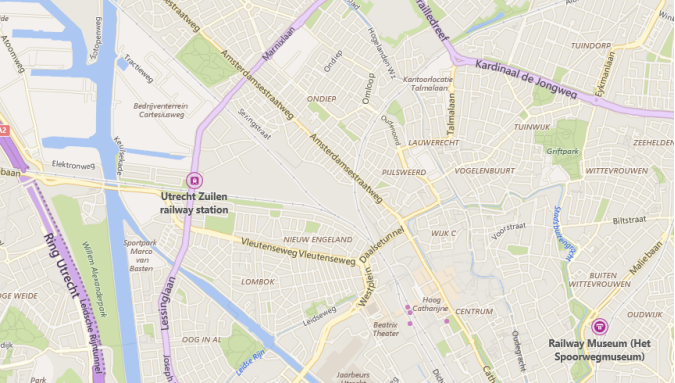
1, Utrecht Zuilen railway station
Address: Cartesiusweg 10, 3534 BD Utrecht
Phone: +31 900 9292
Website: stationutrecht.nl
2, Station Utrecht Lunetten
Address: Furkaplateau 101, 3524 ZH Utrecht
Phone: +31 900 9292
OV-fiets
Travel like the locals: rent a bicycle. It is a quick and healthy way to travel. The OV-fiets is a convenient rental bicycle to use either to go sightseeing or for the last leg of your journey. You can use your Utrecht Region Pass to rent bicycles from nearly 300 locations.
In order to get around, it is virtually a necessity to buy an OV Chipkaart. This is like a fast pass, or an electronic card that you swipe as you board and leave to pay for your fares. The OV Chipkaart comes in two types: personal or anonymous. To obtain a personal OV Chipkaart, there is an application process and you need to provide a photo. But the anonymous type can be purchased throughout the rail system at machines. To get started, you need to load your OV Chipkaart with about 40 Euros. Should you not have enough to pay for a fare, you could be fined triple the cost.
Bus & tram
•Every time you enter a vehicle you must check-in and every time you exit a vehicle you must check-out.
•To check-in or check-out, hold your card in front of the card reader. They are placed at the entrances and exits of all trams and busses.
•When you check-in, you will hear one beep. When you check out, you will hear two beeps.
Shipping
Utrecht has an industrial port located on the Amsterdam-Rijnkanaal. The container terminal has a capacity of 80,000 containers a year. In 2003, the port facilitated the transport of four million tons of cargo; mostly sand, gravel, fertiliser and fodder. Additionally, some tourist boat trips are organised from various places on the Oudegracht; and the city is connected to touristic shipping routes through sluices.
How to get there
Utrecht is a major transportation hub, both by road and rail. It is at the intersection of several major motorways : the E25 (from Rotterdam, Den Bosch and Maastricht), the E30 (from The Hague or Apeldoorn), the E311 (from Breda), and the E35 (from Amsterdam, Arnhem and Essen).
There are train connections to most cities in the Netherlands, including Gouda (20min), Amsterdam (30min), Den Bosch (30min), The Hague (40min), Rotterdam (40min), Leiden (40min), Arnhem (40min), Deventer (1h) and Groningen (2h).
三、经济发展和规模
GDP Per Capita (U.S.$): 38,000
GINI Index: 0.296
Utrecht, Netherlands, is among the top cities with a free business environment.
四、产业特点/重点项目
Utrecht has almost 40,000 companies, 262,000 jobs and is good for no less than 216,000 train passengers per day. Did you know that Utrecht has no less than 39,405 jobs in the healthcare sector? And 120 innovative startups?
Utrecht has a diverse range of business locations, from prestigious inner city mansions, to modern industrial sites near the highway.Hereby an overview of Utrecht business locations.
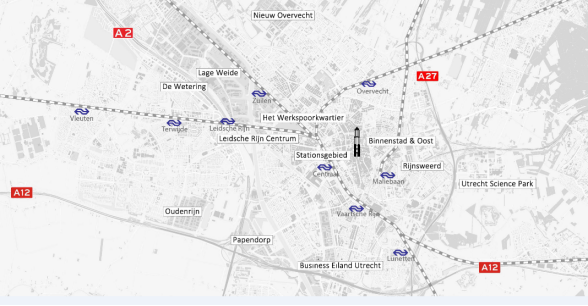
Utrecht Station Area
Utrecht’s main railway station area is a dynamic and popular office location, at the most central meeting place of the Netherlands. Public transport, the new shopping center Hoog Catharijne, theatre and the historic city center are all within reach. Adjacent to the international exhibition centre Jaarbeurs. Utrecht Central Station was recently renovated and is ready for the traveller of the future. From here, you can be at Schiphol Airport in just 30 minutes.
Utrecht Science Park
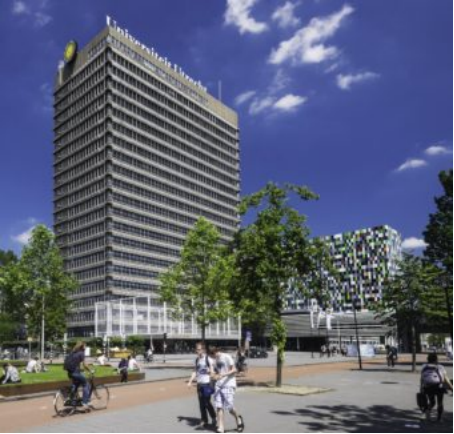
Utrecht Science Park (USP) is an inspiring place where science, meet-ups and collaboration occupy center stage. In addition to the Netherlands’ largest and best university, this is where the University of Applied Sciences Utrecht (HU), University Medical Centre Utrecht, Wilhelmina Children’s Hospital and many scientific organisations are located. USP is a complete campus with a mixture of science, education, health care, companies, (student) accommodation, shops and facilities. Every day, 50,000 students and over 22,000 employees flock to this area. Utrecht Science Park offers easy access by public transport and the A27 and A28 highways.
The Utrecht Science Park offers business locations for companies focusing on life sciences & health, such as the Prinses Máxima Centre for pediatric oncology, Bioceros, Genmab, Merus and Nutricia Research. Soon, the Dutch National Institute for Public Health and Environment (RIVM) will be added to this list. Purpose built business locations are available for innovative start-ups, scale-ups and large companies, such as the new Life Sciences Incubator and UtrechtInc. Construction of the Accelerator will soon start.
Leidsche Rijn Centre
A great location with many qualities that attracts residents, visitors and companies. Leidsche Rijn Centre offers companies a strategic, prominent location alongside the A2 highway and a high-quality city centre with a combination of housing, shops, bars, restaurants, social and cultural facilities. The combination of railway station Utrecht Leidsche Rijn and the direct access to A2 highway result in one of the best accessible business locations in the Netherlands. Travelling time to Utrecht Central Station is only 4 minutes. Office plots are available starting from 5,000 square meters. Capgemini, FNV Trade Union and Oracle headquarters are already located here.
Papendorp
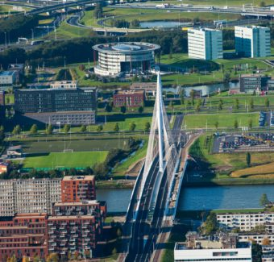
Papendorp is Utrecht’s latest office and business park and is still developing. Situated directly between the A2 and A12 highways and can also be reached easily by public transport. Thanks to its central location in the Netherlands, strategic, prominent location, and high-quality architecture in a park-like environment it is an attractive business location. Moreover, Papendorp is transforming into a diverse location, partly by providing facilities such as sports fields, shops, bars and restaurants, a hotel and a medical clinic. But also by plans of adding at least 1,000 residences.
It is particularly popular among (international) IT companies, business services providers and sales offices. For example Bol.com, Deloitte, Diebold Nixdorf, Ingram Micro, Stork, Unit4 and United Technologies are located in Papendorp.
Healthy Urban Living is the central theme of the city and region. Utrecht’s sustainability and health care ambitions are exceptional. The city wants to be entirely energy-neutral by 2030 and is making solar energy mandatory for all new housing development. The inner city will soon only be accessible for electric cars and even the city buses will soon be electric. In a global Arcadis survey (2016), Utrecht received the highest score for ‘Planet’ and the highest overall score for ‘People-planet-profit’ out of all large cities in the Netherlands.
The largest knowledge institutes, educational institutes and specialised companies, focusing on sustainability and climate can be found in Utrecht. Such as Deltares, the Royal Netherlands Meteorological Institute (KNMI), the National Institute for Publlic Health and the Environment (RIVM), Utrecht Sustainability Institute and Utrecht University. There are various hubs in the city that focus on innovative sustainability, such as Eneco Energy Campus, Jaarbeurs Innovation Mile, the Social Impact Factory and Utrecht Community (UCo).
Rijnsweerd
Dynamic, green, sustainable office park Rijnsweerd is favorably located on the east side of the city. Close to the A28 and A27 highway and can easily be reached by public transport, the city centre is only a few minutes away by bicycle. Rijnsweerd borders on Utrecht Science Park and offers a perfect connection to eastern Utrecht and the Wilhelminapark. Rijnsweerd is transforming into a multifunctional residential and working area with student accommodations, bars, restaurants and shops. There are plans to turn Rijnsweerd into an extension of the Utrecht Science Park. The office park boosts its green personality with recreational area Naturepark Bloeyendael. An attractive and representative residential and working environment with a varied proposition.
Organisations located at Rijnsweerd: the Province of Utrecht and many business and financial services providers, such as ASR, CMS, DAS, EY, NZA, PwC and Remobis.
Business Eiland Utrecht
Business Eiland Utrecht is a diverse area on the southern side of Utrecht, with many offices and business locations. The area has key connections to important outgoing roadaxles and offers great accessibility to highway A12. In addition, the express tram offers an excellent connection with Utrecht Central Railway Station and the city centre.

Noteworthy companies that have established here are: Berenschot, equensWorldine, Gepu and Terberg Leasing. Creative breeding grounds such as Vechtclub XL and the Alchemist are located alongside the Merwede canal. Vechtclub XL (2,500 m2) is a successful shared office building for the creative sector. In addition to studios and workshops, the building offers room for public events and expositions, a fresh food hall, urban farming, a local brewery pub, coffee-roasting house and a restaurant. The Alchemist is a shared office building focusing on social functions. The block of buildings “Kanaalcentrum” is turning into an innovatively mixed cluster with room for start-ups, residences and facilities.
This area is part of the Merwede canal zone. Over the coming 15 years, this former office and distribution area will be transformed into a multifunctional, energy-efficient, sustainable and green district.
Lage Weide
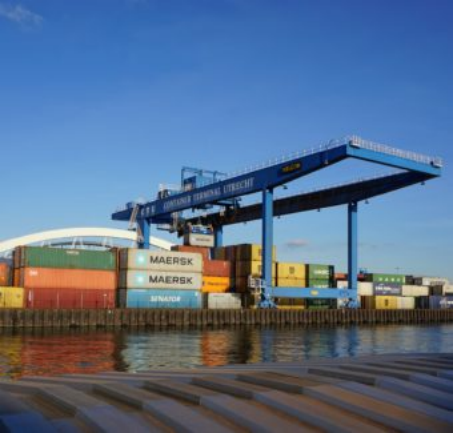
With 216 hectares, Lage Weide is the largest industrial site in the Utrecht region and offers employment for approximately 18,000 people. Lage Weide is one of the oldest industrial sites of the Netherlands and in full development. Located at the Northwest side of Utrecht with direct connection to A2 highway, Amsterdam-Rhine Canal and railways. Lage Weide offers a rail and container terminal and has one of the largest inland ports of the Netherlands. This offers additional opportunities for multimodal transport. Initially, mostly industrial entrepreneurs and construction companies settled at Lage Weide, but recently this focused has shifted to logistics and distribution.
A great area with various renowned and prosperous companies, such as DHL, Fonq, HEMA, Kuehne Nagel, Picnic, Raak, Strukton and WE.
Het Werkspoorkwartier
The Werkspoorkwartier is within cycling distance of the city centre and offers an excellent bus connection and its own train station (Station Zuilen). Especially attractive to city-minded companies and the creative sector. One of the most high-profile buildings in the area is the Werkspoorkathedraal with a pub, restaurant and an enormous industrial heritage hall where creative entrepreneurs can be accomodated as well as organise events.
The current industrial site is transforming into a leading business location for manufacturing companies and creative start-ups. With over 10,000 square meters of new activities and more than 200 new jobs – in part made possible by redeveloping vacant properties – this development is stimulating the competitive position of the region. This is what makes the Werkspoorkwartier the circular breeding grounds of Utrecht. The transformation is still ongoing. On the greenbelt alongside the railway, Utrecht has recently starting building the Hof of Cartesius: a new, green place to work where creative, sustainable entrepreneurs are building their own workplace around a public garden.n
De Wetering
A high-quality business park with intriguing corporate architecture close to the A2 highway. Gateway to Leidsche Rijn Centre with excellent accessibility and a prominent location at the award winning sound barrier and eye-catcher “The Wall”, a 800 metres long complex of buildings alongside the A2. Moreover, its proximity to the Antonius Hospital, Leidsche Rijn Station, medical companies, business services providers and IT companies. At the other side of de Wetering you will find recreation area the Haarrijnse lake. The Wetering has several plots available for high-quality activities.
Downtown & Utrecht East
The historical city centre offers the variety of facilities and optimal public transport access suited to inner city centre and more. Here, you will find mostly (small) business services providers and nonprofit organisations. The bordering areas Wilhelminapark and the Maliebaan, possess monumental mansions and office villas. Most companies here are financial institutions, business services providers, lawyers and accountants, often located near the attractive green streets close to the buzzing shopping streets. The area also offers shared office buildings, such as Hooghiemstra.
Oudenrijn
Oudenrijn is a business park of approximately 74 hectare and is situated on the western side of Utrecht. The area is easy to access thanks to its connection to the A2 and A12 highways. The northern part of the area also offers two high-quality public transportation connections. Oudenrijn offers a diverse collection of companies from the trade, transport and industrial sectors. Upon entering the industrial site, you are greeted by businesses such as BASF, Matex Deuren, Merwede Springs, Velux Nederland BV and a number of automotive companies. Oudenrijn allows the establishment of companies that are not obligated to have an environmental permit and companies that are obligated to have a permit up to environmental category 4.
Nieuw Overvecht
Business park Nieuw Overvecht is located on the northern ringroad of Urecht. It’s positioning towards downtown Utrecht and arterial roads makes it an attractive, city-minded business area. With over 4,000 jobs it is an important area for the city. The site houses a diverse range of companies, mainly focusing on health & movement. These includes companies like KNSB, Saltro, Technische Unie and ULC. Ice-skating rink ” the Vechtsebanen” and the Dutch Health Tech Academy allow for additional activity in the area. Both Nieuw Overvecht and the city continue to invest in the site to improve sustainability and the business climate.
innovation in industry
Utrecht installs world’s first public charge and discharge electric vehicle stations
These innovative charging stations are suitable for storing solar energy in the batteries of electric cars and delivering them back to the neighborhood. The charging stations thus offer both the possibility of charging a car and discharging future cars. bbb
The municipality of Utrecht and the Utrecht company ‘LomboXnet’ will install at least 145 public charging stations for electric cars in 2019. These innovative charging stations are suitable for storing solar energy in the batteries of electric cars and delivering them back to the neighborhood. The charging stations thus offer both the possibility of charging a car and discharging future cars. This ‘Vehicle 2 Grid’ technology is one of Iris Smart Cities’ 16 targeted solutions creating smarter, more sustainable cities.
五、风景名胜,景点
Mostly popular for:
Museum, Zoo, Architecture, Religious Sites, Arts & Culture
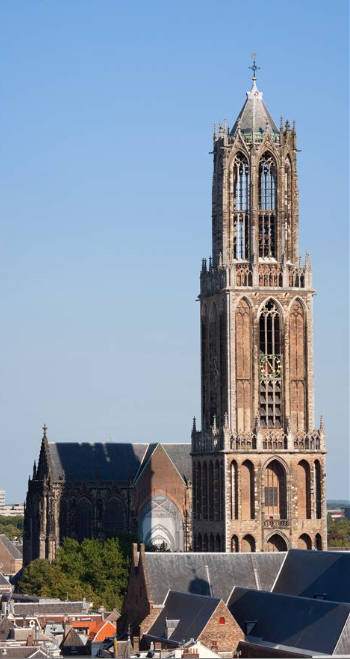
Dom Tower of Utrecht
Church Tower
Address: Domplein 21, 3512 JE Utrecht The NetherlandsMap.
Interests: Architecture, Religious Sites, Historical
Average Stay: 2 hours, 30 minutes
Opened: 1382
Height: 369 feet (Architectural)
Architectural style: Gothic ArchitectureThe Dom Tower of Utrecht is the tallest church tower in the Netherlands, at 112.5 metres in height, and the Gothic-style tower is the symbol of the city. The tower was part of the St. Martin's Cathedral, also known as Dom Church, and was built between 1321 and 1382, to a design by John of Hainaut. The cathedral was never fully completed due to lack of money. Since the unfinished nave collapsed in 1674 the Dom tower became a free standing tower. The tower stands at the spot where the city of Utrecht originated almost 2,000 years ago.

Central Museum
Add: Agnietenstraat 1, 3512 XA Utrecht
Tel: +31 (0)30 2362362
Centraal Museum Utrecht, an open house to explore and discover. From Scorel to Bruna to Viktor & Rolf. From Rietveld to the Utrecht Caravaggists, and from Bloemaert to Marlene Dumas.
Museum Catharijneconvent
Address: Lange Nieuwstraat 38, 3512 PH Utrecht
Phone: +31 30 231 3835
Website: http://www.catharijneconvent.nl/
Interests: Museum · Historical · Family & Kids
Average stay: 1 hour, 30 minutes
Established: 1979
The Museum Catharijneconvent is a museum of religious art in Utrecht, Netherlands. It is located in the former St. Catharine convent, having been sited there since 1979. Its collections include many artifacts from the museum of religious art of the Catholic Archbishopric of Utrecht, located in the convent until 1979. In 2006 the convent closed for restoration. It is part of the Utrecht Museum Night.
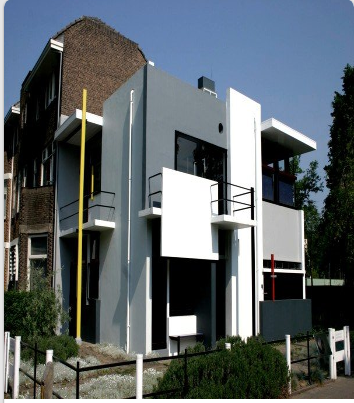
The Rietveld Schröder House,
Add: Prins Hendriklaan 50, 3583 EP Utrecht
Tel: +31 30 236 2310
Entrance fee: € 18.00
The Rietveld Schröder House, built in 1924 by Dutch architect Gerrit Rietveld, one of the best known examples of De Stijl-architecture and arguably the only true De Stijl building. It is one of the rare modern buildings on the UNESCO list of World Heritage Sites.
DOMunder
ADD: Domplein 4, 3512 JC Utrecht
Tel: +31 (0)30 233 99 99
Entrance fee: € 11.00
Tue-Sun 10:30am-16:30pm
DOMunder is a prize-winning historical attraction under the ‘Domplein’ in Utrecht. This exciting underground discovery among the archeological remains of 2000 years of Utrecht history is interesting for all ages. DOMunder has fixed departure times. Please check the available departure times on the website. You can only use the Utrecht Region Pass to buy a ticket at the DOMunder ticket desk at Domplein 4.
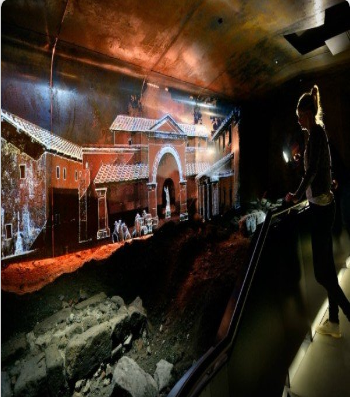
The Railway Museum
Add: maliebaanstation 16, 3581 XW Utrecht
Tel: +31 30 2306261
Entrance fee: € 17.50
Tue-Sun 10am - 5pm
Discover the story behind 175 of railway in the Netherlands and magnificent historic trains. Explore the various components of the museum. An experience for the entire family. A visit takes 3,5 hours on average.
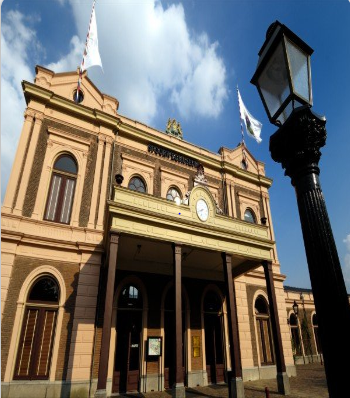
Miffy Museum
Add: Agnietenstraat 2, 3512 XB Utrecht
Tel: +31 30 2362399
The Miffy Museum is a series of miniature worlds. Ten rooms, each dedicated to a different subject, invite young children to discover the world around them step by step.
It is required to reserve a timeslot
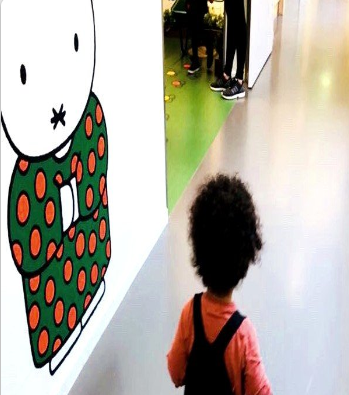
The University Museum has an array of 170.000 restored objects, mostly related to sciences, including some of Europe's most important collections related to dentistry, microscopes, and physiology. The museum also organises permanent and temporary exhibitions.
The Money Museum is housed in the handsome edifice of the Royal Dutch Mint. It has the usual collections of historical coins, including some from the Roman period.
Other museums include the National Museum : from musical clocks to street organs, and the Aboriginal Art Museum
六、历史文化
The first permanent settlement attested in Utrecht dates from 47 CE, when a Roman fortification (castellum) was constructed. It was designed to house a cohort of about 500 legionaries. Emperor Claudius had decided to stop the northward expansion of the empire at the Rhine. Several garrisons were placed along the Limes Germanicus ("Germanic frontier"), including Lugdunum Batavorum (near Leiden), Ulpia Noviomagus Batavorum (Nijmegen), Trajectum ad Mosam (Maastricht) and Trajectum ad Rhenum (Utrecht).
The name Latin name Trajectum ad Rhenum means "Ford on the Rhine". The prefix Ultra (on the far side) was added later to distinguish it from other homonymous places. Ultra Trajectum derived through the ages into germanised form Utrecht.
Medieval monastery corridor, Utrecht (© Merijn van der Vliet | iStockphoto.com)
The wooden city walls were replaced by stone walls in the 2nd century. In the middle of the 3rd century, Germanic tribes regularly invaded the Roman territories. Around 275 the Romans could no longer maintain the northern border and Utrecht was abandoned.
Utrecht's revival came with the Merovingian king Dagobert I (603-639), who founded a church devoted to Saint Martin within the walls of the old Roman fortress. It was destroyed by the Frisians shortly afterwards. Willibrord (658-739), a Northumbrian missionary, converted the Frisians, and was named archbishop of the Frisians, establishing the Diocese of Utrecht in 695.
In 723, the Frankish king bestowed the fortress in Utrecht and the surrounding lands as the base of bishops. From then on Utrecht became one of the most influential seats of power for the Roman catholic church in the Netherlands. The importance of Utrecht as a centre of christianity is illustrated by the appointment of the local born Adriaan Florenszoon Boeyens (1459-1523) as Pope Adrian VI in 1522 (the last non Italian pope before John Paul II).
In 1024, the Bishops of Utrecht were made Princes of the Holy Roman Empire, thus creating the Prince-Bishopric of Utrecht. The next few centuries were marked by conflicts with the County of Holland and the Duchy of Guelders.
The construction of the present cathedral started in 1253, after the earlier romanesque cathedral had been badly damaged by fire. It was not completed before 1420, with the central nave.
In 1528, the worldly powers of the bishop over both Neder- and Oversticht; including the city of Utrecht, were transferred to Charles V of Habsburg, Holy Roman Emperor, King of Spain and ruler of the Seventeen Provinces of the Netherlands (i.e. roughly the modern Benelux and the French Nord-Pas-de-Calais region).
The rule of Charles' son, King Philip II, witnessed the rise of Protestantism and the intensification of the Spanish Inquisiation in the Low Countries. This led to the Dutch Revolt (1568-1648) and the signing of the Union of Utrecht in 1579, regarded as the foundation of the Republic of the Seven United Netherlands. Utrecht had been elevated to the rank of archbishopric in 1559, but the new Protestant Dutch Republic abolished it, along with all other bishoprics, in 1580. The archbishopric was not reinstated until 1853.
The Treaty of Utrecht in 1713 was one of the three treaties settling the War of the Spanish Succession (1701-1714). The treaty placed Louis XIV's grandson on the throne of Spain, while conferring the Spanish Netherlands to Austria. Its most lasting effect was the cession by Spain of Gibraltar to Great Britain.
In 1843, a railway connecting Utrecht to Amsterdam was opened. After that, Utrecht gradually became the main hub of the Dutch railway network.
七、其他信息
High quality of life:
Utrecht, a pocket-size metropolis: open, accessible and welcoming. Utrecht is a compact city and can be easily explored by foot or by bicycle. Well-known for its beautiful historic city centre with a large shopping area and a range of cultural amenities. Offering exciting architecture, inspiring museums, lively festivals, unique events and gorgeous parks. A treasured city to live, work and study, qualifying as the Netherlands’ second most attractive city to live in (Atlas for Dutch City councils 2019).
Utrecht is one of the top ten city matches for 3.8% of Teleport users.
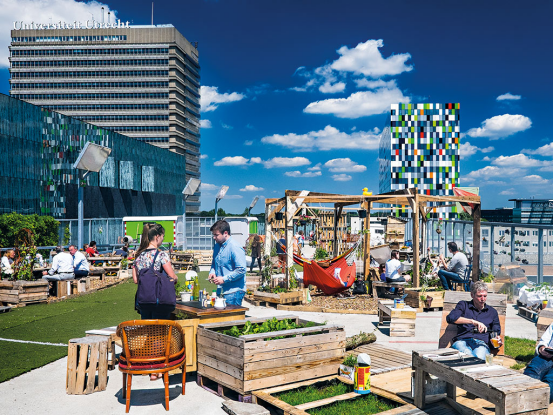
People relax near Utrecht University. The city has become one of the most attractive in the world, with its cutting-edge infrastructure and healthy lifestyle culture
The city offers one of the healthiest and most sustainable living environments in the world; home to cutting-edge innovations that not only improve the health of those who live there, but their overall quality of life too. And Utrecht actually shares this innovation and knowledge with other cities around the globe. Having such a fertile foundation, the city finds it easy to attract talented people from all over the world, with entrepreneurs, impressive start-ups and investments finding their way to Utrecht, helping the city to thrive. Having such strong underpinnings has assisted in cultivating an environment that encourages healthy competition, improves overall living standards, and has cemented the city as one of the best places in the world to live
Culture
Utrecht city has an active cultural life, and in the Netherlands is second only to Amsterdam.[9] There are several theatres and theatre companies. The 1941 main city theatre was built by Dudok. In addition to theatres, there is a large number of cinemas including three arthouse cinemas. Utrecht is host to the international Early Music Festival (Festival Oude Muziek, for music before 1800) and the Netherlands Film Festival. The city has an important classical music hall Vredenburg (1979 by Herman Hertzberger). Its acoustics are considered among the best of the 20th-century original music halls.[citation needed] The original Vredenburg music hall has been redeveloped as part of the larger station area redevelopment plan and in 2014 gained additional halls that allowed its merger with the rock club Tivoli and the SJU jazzpodium. There are several other venues for music throughout the city. Young musicians are educated in the conservatory, a department of the Utrecht School of the Arts. There is a specialised museum of automatically playing musical instruments.
Prins Clausbrug across the Amsterdam-Rhine Canal
There are many art galleries in Utrecht. There are also several foundations to support art and artists. Training of artists is done at the Utrecht School of the Arts. The Centraal Museum has many exhibitions on the arts, including a permanent exhibition on the works of Utrecht resident illustrator Dick Bruna, who is best known for creating Miffy ("Nijntje", in Dutch). BAK, basis voor actuele kunst offers contemporary art exhibitions and public events, as well as a Fellowship program for practitioners involved in contemporary arts, theory and activisms. Although street art is illegal in Utrecht, the Utrechtse Kabouter, a picture of a gnome with a red hat, became a common sight in 2004.[61] Utrecht also houses one of the landmarks of modern architecture, the 1924 Rietveld Schröder House, which is listed on UNESCO's world heritage sites.
Every Saturday, a paviour adds another letter to The Letters of Utrecht, an endless poem in the cobblestones of the Oude Gracht in Utrecht. With the Letters, Utrecht has a social sculpture as a growing monument created for the benefit of future people.
To promote culture, Utrecht city organizes cultural Sundays. During a thematic Sunday, several organisations create a program which is open to everyone without, or with a very much reduced, admission fee. There are also initiatives for amateur artists. The city subsidises an organisation for amateur education in arts aimed at all inhabitants (Utrechts Centrum voor de Kunsten), as does the university for its staff and students. Additionally there are also several private initiatives. The city council provides coupons for discounts to inhabitants who receive welfare to be used with many of the initiatives.
In 2017 Utrecht was named as a UNESCO City of Literature.
Sports
Utrecht is home to the premier league (professional) football club FC Utrecht, which plays in Stadium Nieuw Galgenwaard. It is also the home of Kampong, the largest (amateur) sportsclub in the Netherlands (4,500 members), SV Kampong. Kampong features field hockey, association football, cricket, tennis, squash and boules. Kampong's men and women top hockey squads play in the highest Dutch hockey league, the Rabohoofdklasse. Utrecht is also home to baseball and softball club UVV, which plays in the highest Dutch baseball league: de Hoofdklasse. Utrecht's waterways are used by several rowing clubs. Viking is a large club open to the general public, and the student clubs Orca and Triton compete in the Varsity each year.
In July 2013, Utrecht hosted the European Youth Olympic Festival, in which more than 2,000 young athletes competed in nine different olympic sports. In July 2015, Utrecht hosted the Grand Départ and first stage of the Tour de France.
Music and events
The city has several music venues such as TivoliVredenburg, Tivoli De Helling, ACU, Moira, EKKO, DB's and RASA. Utrecht hosts the yearly Utrecht Early Music Festival (Festival Oude Muziek). In Jaarbeurs it hosts Trance Energy. Every summer there used to be the Summer Darkness festival, which celebrated goth culture and music. In November the Le Guess Who? festival, focused on indie rock, art rock and experimental rock, takes place in many of the city's venues.
Theatre
There are two main theaters in the city, the Theater Kikker and the Stadsschouwburg Utrecht De parade, a travelling theatre festival, performs in Utrecht in summer. The city also hosts the yearly Festival a/d Werf which offers a selection of contemporary international theatre, together with visual arts, public art and music.
八、联系方式
Mayor Jan van Zanen.
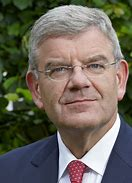
Assuming office
1 July 2020
Succeeding Pauline Krikke
Boudewijn Revis (Acting)
Johan Remkes (Acting)
Mayor of Amstelveen
In office
1 July 2005 – 31 December 2013
Preceded by Harry Kamphuis
Succeeded by Fred de Graaf (Ad interim)
Personal details
Born Jan Hendrikus Cornelis van Zanen
4 September 1961 (age 58)
Purmerend, Netherlands
Nationality Dutch
Political party People's Party for
Freedom and Democracy (from 1979)
Spouse(s) Marian van den Berg (m. 1991)
Children 1 son and 1 daughter
Residence Utrecht, Netherlands
Alma mater Vrije Universiteit Amsterdam
(Bachelor of Laws, Master of Laws)
Cornell Law School
(Juris Doctor)
Occupation Politician · Civil servant · Jurist · Corporate director · Nonprofit director
Military service
Allegiance Netherlands
Branch/service Royal Netherlands Air Force
Years of service 1989–1991 (Conscription)
1991–1996 (Reserve)
Rank Second lieutenant Second lieutenant
Add: CITY HALL,Stadsplateau 1, 3521 AZ Utrecht, The Netherlands
Post Code: 14030
Tel: +31 30 286 00 00
https://www.utrecht.nl/
email: info@utrecht.nl
Postbus16200@utrecht.nl
Gemeente Utrecht
@GemeenteUtrecht
Twitter Gemeente Utrecht
@GemeenteUtrecht
